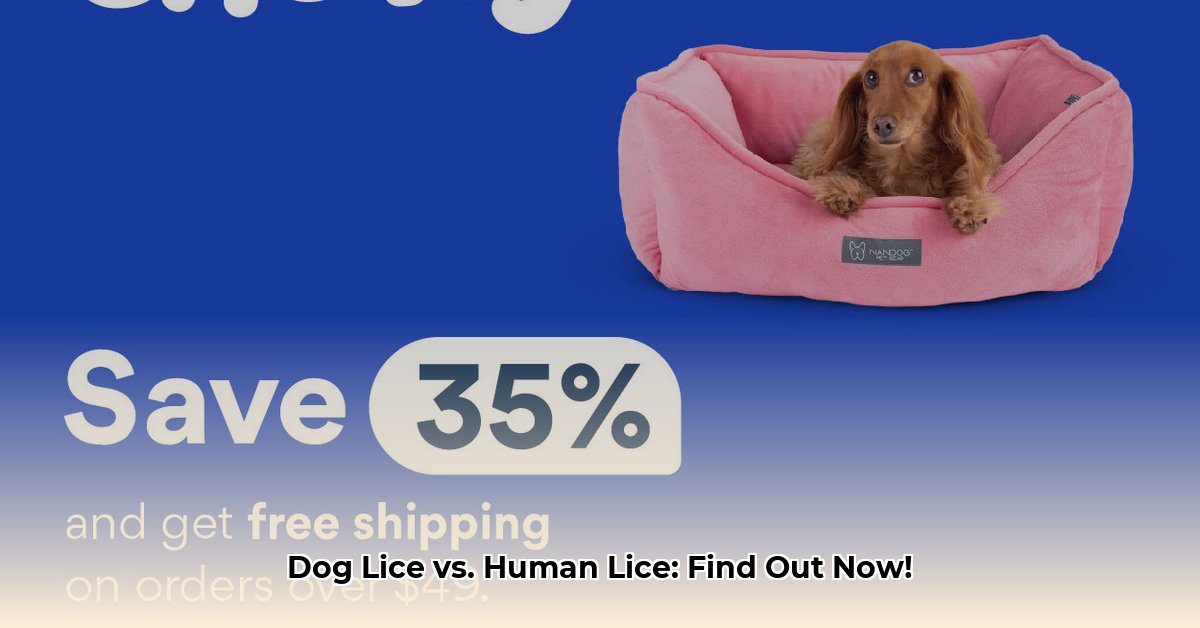No. You can breathe easy. Your dog can’t catch head lice from you, and you can’t catch dog lice from them. Lice are species-specific, meaning they’re adapted to live on only one type of host.
Why Your Dog Won’t Catch Your Lice
Lice are picky parasites. They’ve evolved over time to thrive on a specific host, adapting to their unique environment like a lock and key. Human lice ( Pediculus humanus capitis ) are perfectly suited to our body temperature, hair type, and skin nutrients. Trying to live on a dog would be like trying to survive on Mars for them – impossible! Dog lice, on the other hand, have their own preferred environment: your canine companion.
Here’s a visual comparison:
[Insert image comparing human and dog lice. Ideally, the image should highlight differences in size, shape, and color.]
Even Close Contact is Unlikely to Spread Lice
Even if your child has head lice and snuggles with the dog, transmission is highly improbable. While a stray louse might briefly transfer, it can’t reproduce or survive on a dog. It’s like a fish out of water! Likewise, you won’t get dog lice even with close canine contact.
Does Your Dog Have Lice or Something Else?
If your dog’s scratching, it’s probably not human lice. More likely culprits include:
- Fleas: These are common external parasites in dogs.
- Mites: Microscopic skin parasites that cause mange.
- Allergies: Environmental or food allergies can lead to itchy skin.
- Dry skin: Especially common in winter months.
However, if you see small, yellowish insects crawling on your dog, or tiny white eggs (nits) firmly attached to the hair shafts, your dog might have dog lice ( Trichodectes canis or Linognathus setosus ). They may have picked them up from another dog.
What to Do If You Suspect Dog Lice
Never use human lice products on your dog. They can be toxic to pets. Instead, contact your veterinarian. They’ll diagnose the problem and prescribe a safe and effective treatment.
Preventing Lice in Dogs (and Humans!)
- Regular Grooming: Brush your dog’s fur frequently to remove any potential parasites and check for skin abnormalities.
- Clean Bedding: Wash your dog’s bedding (and your child’s, too!) frequently in hot water.
- Preventative Treatments: Your veterinarian can recommend preventative medications or topical treatments for fleas and other parasites.
- Avoid Contact with Infested Animals: If you know a dog has lice, minimize contact between your dog and the infested animal.
Symptom Checklist for Dog Lice
| Symptom | What to Look For |
|---|---|
| Excessive Itching | Continuous scratching, biting, or licking at the skin. |
| Restlessness | Your dog seems agitated and uncomfortable. |
| Visible Lice | Tiny, moving insects in the fur, often yellowish. |
| Nits | Small, white eggs firmly attached to the hair shafts. |
| Hair Loss | Patchy fur loss, especially around the neck and ears (severe cases). |
| Skin Irritation | Redness, inflammation, or sores. |
Ongoing Research and Uncertainties
While our current understanding strongly suggests that lice are species-specific, research is ongoing. There’s always a possibility that new findings could nuance our knowledge of parasite-host relationships. For example, some researchers are exploring the potential impact of environmental factors on how lice thrive. This highlights the importance of consulting your veterinarian for the latest information.
Disclaimer
This information is for general knowledge and doesn’t constitute veterinary advice. Always consult your veterinarian for any concerns about your dog’s health.
- Why Glass Boxes for Lunch Are Trending for Meal Prep - December 17, 2025
- Bento Box Glass Offers Practical, Eco-Friendly Meal Storage - December 16, 2025
- The Best Bento Box Price For Your Perfect Packed Lunch - December 15, 2025










